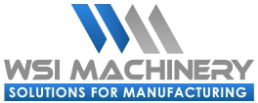Belts are made to order. Ships in 5 - 7 Business Days.
#80 Grit Belts, 3 Per a Box
#100 & Finer Grit Belts, 5 Per a Box
How to Select the Best Abrasive for your Needs
Ultimately, there's no one-size-fits-all solution for abrasives. The best abrasive for your will depend on the materials you're working with and the outcome you're tying to achieve with your materials.
GRIT
The grit and type of sandpaper you need to use depends on the intended application. If you are simply finishing or smoothing, you want to use an extra fine abrasive; something below 100 grit. If removing material, such as paint, varnish, or uneven blemishes, stay between 120 and 150 grit sizes. If shaping or evening out un-leveled surfaces, you want to use a course grit of at least 200.
GRAIN
One of the most popular abrasive materials, aluminum oxide is the industry standard for common applications and is the least expensive option on the market. The low price point comes at a cost as aluminum oxide often has the least longevity. Open coast aluminum oxide is excellent for planing, stripping, roughing, and finishing on all wood types. Closed coat aluminum oxide is great for snagging, weld removal, and grinding of metals. High quality aluminum oxide is highly friable, meaning the tips of the abrasive grains fragment as it wears, continually providing sharp cutting surfaces, and increase working life. Aluminum oxide abrasives are highly customizable to specific applications.
CLOTH (COTTON, POLYSTER, POLY/COTTON BLEND)
Cloth is a popular backing due to its cost effectiveness and strength. Premium abrasive product typically feature cloth or other synthetic backings. Polyester is a waterproof, synthetic backing that offers superior strength and longevity. Most standard sized belts are cloth backed.
PAPER
Paper backed abrasives typically include aluminum oxide and silicon carbide belts, discs, and shop rolls. Paper backing has some advantages, such as it light weight and lower cost compared to cloth backing. It also delivers even cutting for delicate processes and finer grits. However, paper alone does not provide the rugged durability of cloth or synthetic backings. Paper backing can be infused with material such as latex, to create and extra flexible, durable product that delivers consistent scratch patterns. Some industrial and professional users require paper wide belts for specific woodworking, stone, granite, plastics and metal finishing applications.








